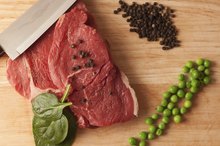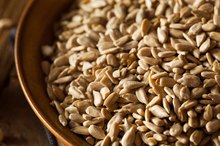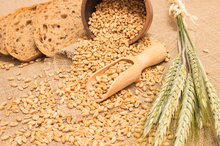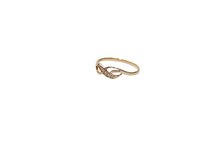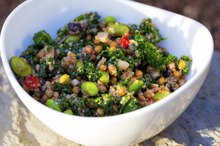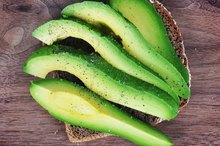What does fact checked mean?
At Healthfully, we strive to deliver objective content that is accurate and up-to-date. Our team periodically reviews articles in order to ensure content quality. The sources cited below consist of evidence from peer-reviewed journals, prominent medical organizations, academic associations, and government data.
- Centers for Disease Control and Prevention: Iron and Iron Deficiency
- Linus Pauling Institute: Iron
- Harvard School of Public Health: Protein -- Moving Closer to Center Stage
- National Institutes of Health: Iron
The information contained on this site is for informational purposes only, and should not be used as a substitute for the advice of a professional health care provider. Please check with the appropriate physician regarding health questions and concerns. Although we strive to deliver accurate and up-to-date information, no guarantee to that effect is made.
Iron Deficiency & Red Meat
Iron is an essential component of hemoglobin, the protein in your red blood cells responsible for carrying oxygen. Without enough iron, your blood won't contain adequate oxygen, and you may develop iron-deficiency anemia, a condition characterized by tiredness, shortness of breath, headaches, hair loss, pale or yellowish skin and an abnormally fast heartbeat 1. If you're a vegan or a strict vegetarian and don't consume iron-rich animal products like red meat, you may be more likely to become deficient in iron. However, red meat isn't the only -- or necessarily best -- way to meet your iron requirement.
Amount of Iron in Red Meat
An average 3-ounce serving of cooked red meat such as beef contains approximately 2.32 milligrams of iron. A man between 19 and 50 years old should have 8 milligrams of iron per day, and this amount would fulfill 29 percent of his requirement. A woman of the same age needs 18 milligrams daily, and a 3-ounce serving of beef would supply almost 13 percent of that recommendation. Pork, which is also considered a red meat, contains less iron, with 0.9 milligrams per 3-ounce serving.
- An average 3-ounce serving of cooked red meat such as beef contains approximately 2.32 milligrams of iron.
- A woman of the same age needs 18 milligrams daily, and a 3-ounce serving of beef would supply almost 13 percent of that recommendation.
Problems With Red Meat
List of Foods & Drinks High in Iron
Learn More
While including red meats like beef in your diet might help you avoid iron deficiency, eating too much of it may not be good for your overall health. In 2012, the "Archives of Internal Medicine" published the results of a study that followed over 37,000 men and more than 83,000 women for almost three decades. The researchers found the more red meat you eat, the more likely you are to develop -- and die from -- chronic medical problems like cancer and heart disease. The study prompted the Harvard School of Public Health to urge people to consume no more than two 3-ounce servings of red meat weekly 5.
- While including red meats like beef in your diet might help you avoid iron deficiency, eating too much of it may not be good for your overall health.
- The study prompted the Harvard School of Public Health to urge people to consume no more than two 3-ounce servings of red meat weekly 5.
Other Sources of Iron
Consuming red meat isn't the only way to have a diet rich in iron. Canned clams contain 23.8 milligrams of the mineral in each 3-ounce serving, more than 100 percent of the recommended daily allowance for men and women. Oysters, shrimp and dark chicken meat are also good sources. Plant-based foods like beans and dark leafy greens such as spinach contain non-heme iron, a form not as easily absorbed as the heme iron in animal products. You can increase the amount of iron you retain from plant foods by eating them with a small amount of meat or a rich source of vitamin C.
- Consuming red meat isn't the only way to have a diet rich in iron.
- Plant-based foods like beans and dark leafy greens such as spinach contain non-heme iron, a form not as easily absorbed as the heme iron in animal products.
Healthiest Red Meat Cuts
Iron Dosages for Anemia With Bruising
Learn More
If you decide you still want to include red meat as an iron source in your diet, choose cuts that conform to the U.S. Department of Agriculture's guidelines for lean cuts. These are cuts that have less than 95 milligrams of cholesterol, no more than 4.5 grams of saturated fat and fewer than 10 grams of total fat in a 3.5-ounce serving. Some include top sirloin steak, flank steak, 93 percent lean ground beef, pork tenderloin and pork sirloin chops. Use low-fat cooking methods such as grilling, roasting or broiling.
- If you decide you still want to include red meat as an iron source in your diet, choose cuts that conform to the U.S. Department of Agriculture's guidelines for lean cuts.
Related Articles
References
- American Society of Hematology: Iron-Deficiency Anemia
- Linus Pauling Institute: Iron
- Harvard University Health Services: Iron Content of Common Foods
- Archives of Internal Medicine: Red Meat Consumption and Mortality - Results from 2 Prospective Cohort Studies
- Harvard School of Public Health: Protein -- Moving Closer to Center Stage
- National Institutes of Health: Iron
- Beard, J. L., Dawson, H., & Piñero, D. J. (1996). Iron metabolism: a comprehensive review. Nutrition Reviews, 54(10), 295-317.
- Trumbo, P., Yates, A. A., Schlicker, S., & Poos, M. (2001). Dietary reference intakes: Vitamin A, vitamin K, arsenic, boron, chromium, copper, iodine, iron, manganese, molybdenum, nickel, silicon, vanadium, and zinc. Journal of the Academy of Nutrition and Dietetics, 101(3), 294.
- Allen, L. H. (2000). Anemia and iron deficiency: effects on pregnancy outcome. The American Journal of Clinical Nutrition, 71(5), 1280s-1284s.
- Drukker, L., Hants, Y., Farkash, R., Ruchlemer, R., Samueloff, A., & GrisaruâGranovsky, S. (2015). Iron deficiency anemia at admission for labor and delivery is associated with an increased risk for Cesarean section and adverse maternal and neonatal outcomes. Transfusion, 55(12), 2799-2806.
- Miller, J. L. (2013). Iron deficiency anemia: a common and curable disease. Cold Spring Harbor Perspectives in Medicine, 3(7), a011866.
- Percy, L., Mansour, D., & Fraser, I. (2017). Iron deficiency and iron deficiency anaemia in women. Best Practice & Research Clinical Obstetrics & Gynaecology, 40, 55-67.
- Telford, R. D., Sly, G. J., Hahn, A. G., Cunningham, R. B., Bryant, C., & Smith, J. A. (2003). Footstrike is the major cause of hemolysis during running. Journal of Applied Physiology, 94(1), 38-42.
- Zoller, H., & Vogel, W. (2004). Iron supplementation in athletesâfirst do no harm. Nutrition, 20(7), 615-619.
- Collings, R., Harvey, L. J., Hooper, L., Hurst, R., Brown, T. J., Ansett, J., ... & Fairweather-Tait, S. J. (2013). The absorption of iron from whole diets: a systematic review. The American Journal of Clinical Nutrition, ajcn-050609.
Writer Bio
Michelle Kerns writes for a variety of print and online publications and specializes in literature and science topics. She has served as a book columnist since 2008 and is a member of the National Book Critics Circle. Kerns studied English literature and neurology at UC Davis.
